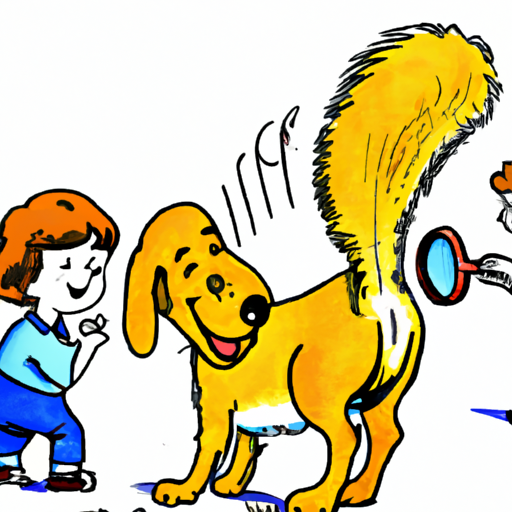A subject that may have crossed your mind as you watch your four-legged friend wagging their tail with joy or tucking it between their legs in fear.
The Evolution of the Dog Tail
Why do dogs have tails? The answer lies in their evolution. Dogs, like all mammals, have tails because their distant ancestors did. Over time, different species have evolved to use their tails in different ways.
- Wolves, the closest wild relative of dogs, use their tails for balance while running and to communicate with other members of their pack.
- Foxes use their bushy tails as a warm blanket in cold weather.
- Squirrels use their tails as a rudder when jumping from tree to tree.
Dogs, through the process of domestication, have developed a wide variety of tail shapes and sizes, but they all serve specific purposes.
The Tail as a Communication Device
One of the most crucial roles a dog’s tail plays is in communication. If you’ve spent any time around dogs, you know that they use their tails to express a wide range of emotions.
- Wagging Tail – Usually indicates happiness or excitement.
- Tucked Tail – A sign of fear or submission.
- Stiff, Raised Tail – Indicates alertness or aggression.
These are just general guidelines, and it’s important to remember that tail signals can vary widely from dog to dog.
The Tail for Balance and Movement
Another essential function of a dog’s tail is to provide balance and aid in movement. This is particularly true for breeds that were developed for working or hunting.
| Breed | Tail Function |
|---|---|
| Retriever | Uses tail as a rudder when swimming |
| Greyhound | Uses tail for balance when running at high speeds |
| Border Collie | Uses tail to signal sheep when herding |
The Tail as a Health Indicator
A dog’s tail can also give you clues about its health. Changes in the way your dog carries its tail can be a sign of physical discomfort or illness. For example, if your dog is usually a happy tail-wagger but suddenly keeps its tail down and seems unable to wag it, it may be experiencing pain or discomfort and should be taken to the vet.
Some Dog Breeds Don’t Have Tails
You might have noticed that some breeds, like the French Bulldog or the Australian Shepherd, don’t seem to have tails at all. This can be due to genetic factors – some dogs are born with short or no tails. In other breeds, it’s a result of tail docking, a controversial practice that involves the removal of a puppy’s tail for cosmetic or working purposes.
FAQ Section
Q1: Why does my dog wag its tail?
A: Dogs wag their tails primarily as a form of communication, usually indicating happiness or excitement.
Q2: What does it mean when a dog tucks its tail?
A: A tucked tail usually indicates fear or submission.
Q3: Is a dog’s tail important for balance?
A: Yes, many breeds use their tails for balance, particularly when running or swimming.
Q4: Can a dog’s tail indicate health problems?
A: Yes, changes in tail position or movement can be a sign of discomfort or illness.
Q5: Why do some dogs not have tails?
A: Some dogs are born with short or no tails due to genetic factors. In other breeds, it’s the result of tail docking.



